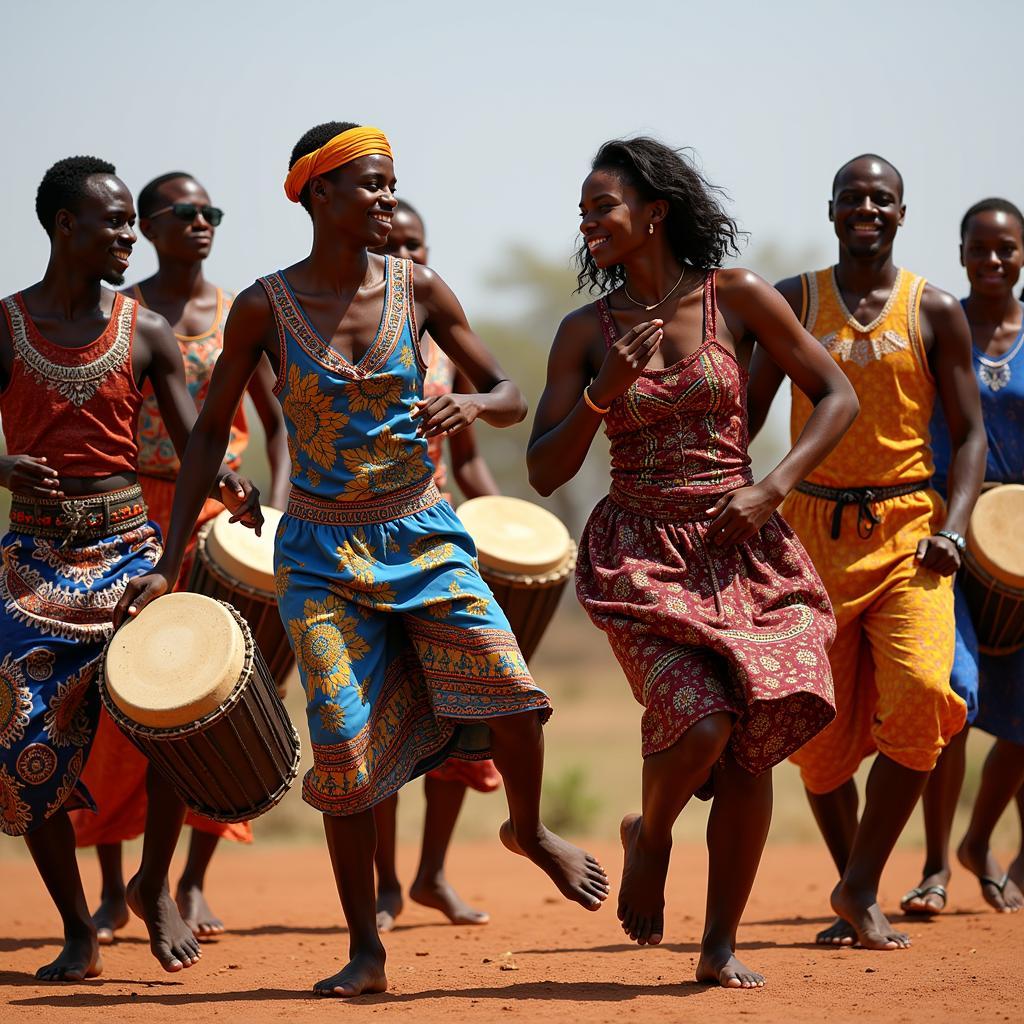African Language Mostly Used: Unveiling the Continent’s Linguistic Tapestry
Africa, a continent renowned for its rich cultural diversity, boasts a vast linguistic landscape with an estimated 2,000 distinct languages spoken across its 54 countries. Determining the single “African Language Mostly Used” proves an impossible task as numerous languages hold significant prominence depending on geographical location and cultural context. However, exploring some of the most widely spoken and influential African languages offers a glimpse into this fascinating linguistic tapestry.
A Tapestry of Tongues: Beyond a Single “African Language Mostly Used”
It’s important to clarify that there’s no single “African language” in a singular sense. The term “African languages” encompasses a vast family tree with numerous branches and sub-branches. Each language carries its own unique history, cultural significance, and geographical distribution.
Arabic: A Bridge Across Continents
While not indigenous to sub-Saharan Africa, Arabic holds the title of the most spoken language on the African continent. Its prevalence stems from its historical role as a language of trade, religion (Islam), and administration in North Africa, the Horn of Africa, and parts of East Africa.
Swahili: A Bantu Language Connecting East and Central Africa
Swahili, a Bantu language with Arabic influences, enjoys widespread use across East and Central Africa. Its role as a lingua franca in trade, education, and media contributes to its prominence in countries like Tanzania, Kenya, Uganda, and the Democratic Republic of Congo.
Hausa: A West African Lingua Franca
Hausa, a member of the Chadic language family, holds sway in West Africa, particularly in Nigeria, Niger, and neighboring countries. Its significance lies in its role as a major language of commerce, administration, and media across the region.
Yoruba and Igbo: Pillars of Nigerian Identity
Within Nigeria, Yoruba and Igbo stand as two of the most widely spoken indigenous languages. These languages represent vital aspects of Nigerian cultural identity and are widely used in everyday life, education, and the arts.
Navigating the Language Landscape: Understanding Regional Variations
The perception of an “african language mostly used” shifts depending on the region of Africa in focus. While Arabic dominates North Africa, Swahili reigns supreme in East Africa. West Africa boasts a diverse linguistic landscape with Hausa, Yoruba, and Igbo among the prominent languages.
The Role of Colonization: A Complex Linguistic Legacy
European colonization played a significant role in shaping the linguistic landscape of Africa. While some indigenous languages faced suppression, others, like English, French, and Portuguese, became official languages in many countries, used in government, education, and business.
Embracing Linguistic Diversity: A Source of Cultural Richness
Rather than seeking a single “african language mostly used,” it’s essential to appreciate the continent’s linguistic diversity as a testament to its rich cultural heritage. Each language, whether widely spoken or confined to a specific community, carries invaluable cultural knowledge, traditions, and worldviews.
Conclusion: Celebrating the Symphony of African Languages
Africa’s linguistic tapestry, woven with thousands of threads, reflects the continent’s vibrant and diverse cultural heritage. While no single “african language mostly used” exists, exploring prominent languages like Arabic, Swahili, Hausa, Yoruba, and Igbo offers a glimpse into the fascinating linguistic landscape of this remarkable continent. Embracing and celebrating this linguistic diversity stands as a testament to Africa’s enduring cultural legacy.

